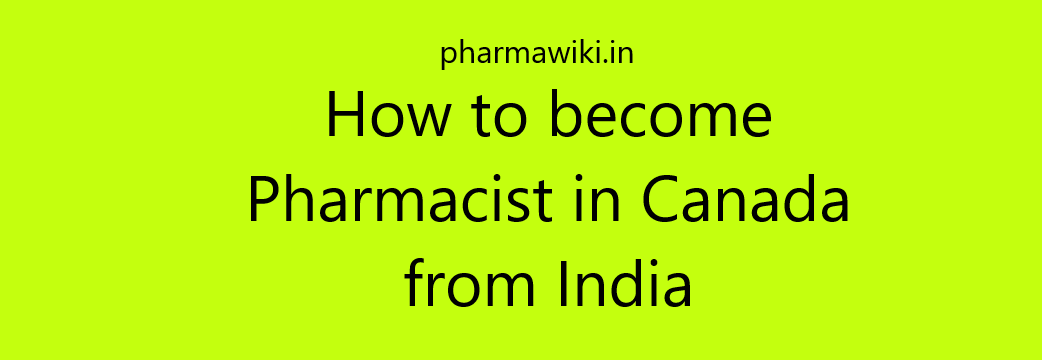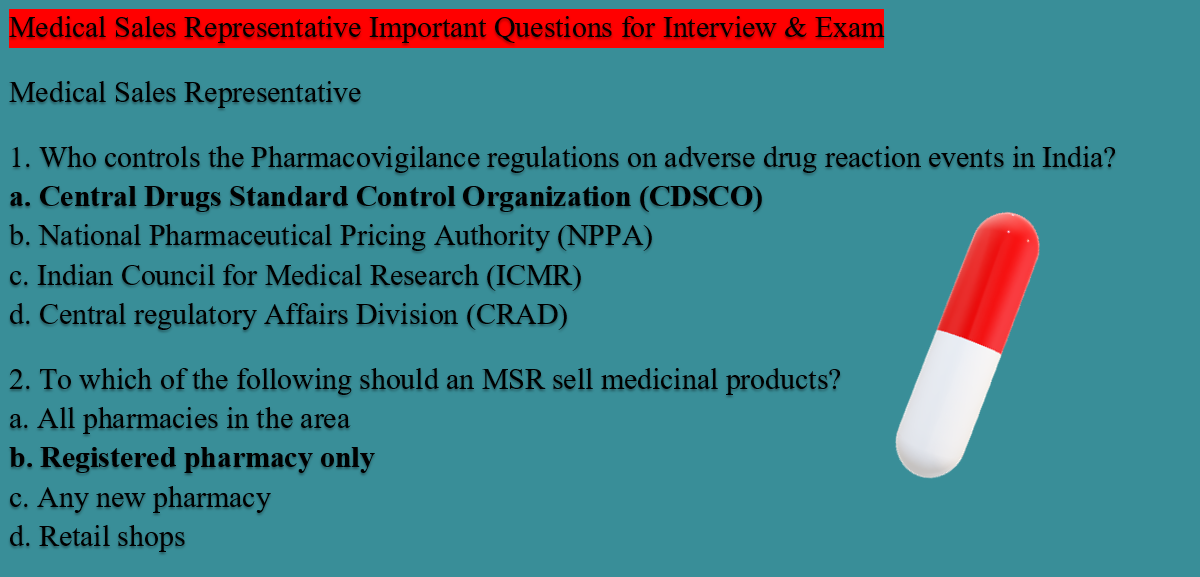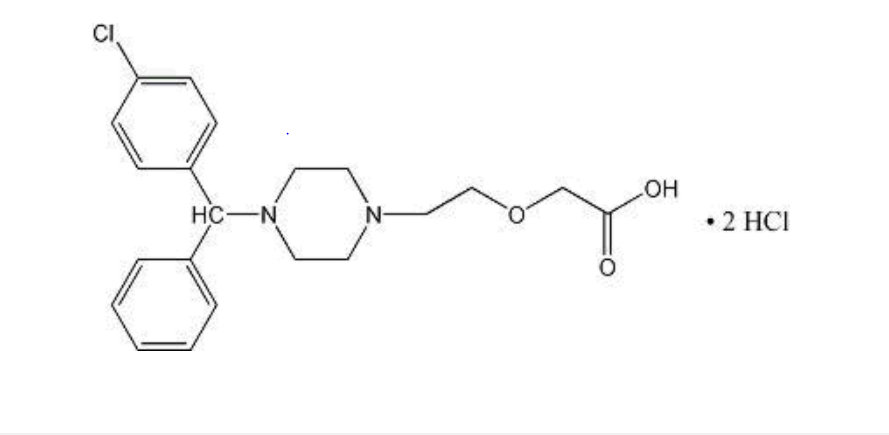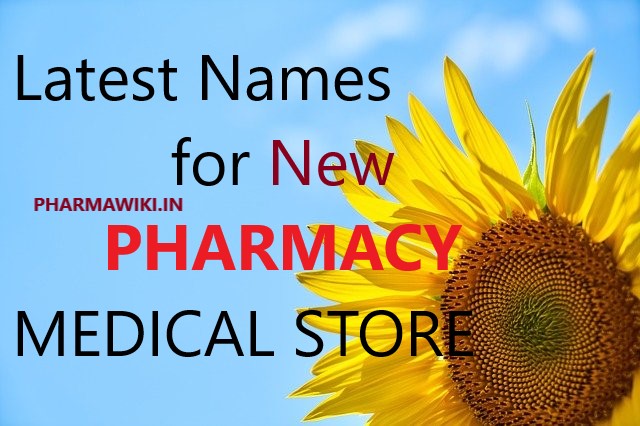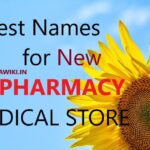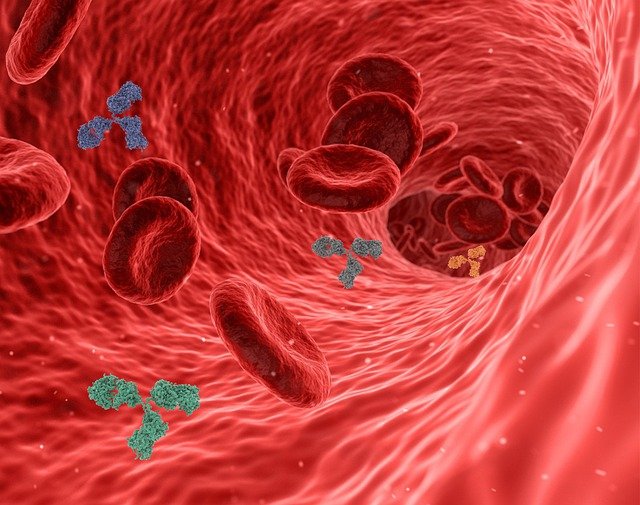Hello readers. Here are thirty Medical Sales Representative Important Questions for you to attend an job related Interview or an Examination. First three questions are for experience medical reps and all the later are for both freshers and experienced medical representatives.
How to do Competitive Analysis in work field?
(1) Know who is your competitor.
(2) What are the rates of that product.
(3) What is the weight of that product regarding to manufacture price.
(4) Compare your product with weight and price.
(5) Check out the ingredients of your competitor product and figure out which is harmful for patients.
(6) Compare your product does that also contain that ingredients.
(7) Collect information about competitor’s company.
(8) Total no. of depos, workers, product availability, company background and number of products.
(9) Do they have any certificate.
(10) Any frauds about that company
- What information you need to collect as a medical rep about Product
- For example if you are talking to a doctor about crocin then collect all information related to crosin first because doctor may ask you about crosin.
- In my case all the doctors asked something about my products.
- Now Collect all the good things about your product For example if crosin is my product than you will collect this information:-
- Ingredients of crosin.
- Effect of crosin on patients
- Side effects of crosin.
- How many doctors have prescribed this products.
- Weight of product(Many medical representatives do not know what is the weight of their product).
Know the Summary about your company without fail
First gather all the detailed information about your company.
Extract 5 achievement of your company like:-
(1) Any award given to your company.
(2) Approved with ISI Certificate.
(3) No. of offices in country.
(4) Total No. of workers and Total No. of depos.
(5) Total no. of products in market.
Exp & Fresher Medical Sales Representative MCQ
1. Who controls the Pharmacovigilance regulations on adverse drug reaction events in India?
a. Central Drugs Standard Control Organization (CDSCO)
b. National Pharmaceutical Pricing Authority (NPPA)
c. Indian Council for Medical Research (ICMR)
d. Central regulatory Affairs Division (CRAD)
2. To which of the following should an MSR sell medicinal products?
a. All pharmacies in the area
b. Registered pharmacy only
c. Any new pharmacy
d. Retail shops
3. How can market information on pricing of competitors’ product be gathered?
a. By contacting the competitor’s head office
b. By discussing with the distributor
c. By discussing with the pharmacist
d. By contacting the competitor’s representative
4. What is the best method to gather information on competitor’s delivery schedules?
a. Monitoring promotional camps
b. Monitoring distributor activity
c. Monitoring selling activity of pharmacist
d. Monitoring prescriptions of the doctor
15. Whose activity should be monitored by an MSR?
a. Doctor’s activity
b. Patient’s activity
c. Competitors’ activity
d. Hospital staff activity
6. Which is the best used method to find out competitors’ pricing?
a. Search engine
b. Newspaper
c. Friend’s network
d. Manual survey
7. How is health service activity monitored in a specific area?
a. By attending conferences
b. By following local news papers
c. By interacting with the pharmacist
d. By reviewing medical journals
8. Which one of the following is a method to identify potential client base?
a. Conduct dealers meet
b. Attend regional conferences
c. Monitor health service activity of an area
d. Identify lacunas in competitors product
9. Where should an MSR monitor health service activities?
a. All areas which are accessible
b. Within specific allotted area
c. Hospitals in other geographical areas
d. Pharmacies in other geographical areas
10. Which one of the following is an after sales service to a health service center?
a. Explaining the standards
b. Arranging appointments with doctor
c. Identifying prospective customers
d. Delivering pending orders
11. How does a medical sales representative (MSR) brief the technical data during meetings?
a. By presenting customers profile
b. By presenting product literature
c. By presenting a list of customers met
d. By presenting the number of visits made
12. Who is the key contact person in a hospital to be consulted for sales improvement?
a. HR in-charge
b. Administrative staff
c. Purchase in-charge
d. Nursing staff
13. Who is the contact person at the front office in a hospital?
a. Medical representative
b. Doctor
c. Nurse
d. Receptionist
14. What should an MSR do when a physician looks convinced with the product?
a. Leave, with a promise to return soon
b. Understand the doctor’s likes and dis-likes
c. Continue with the product knowledge
d. Request him to prescribe the product
15. How can a person become a successful medical representative?
a. Complete sales on time
b. Good communicating skills
c. Regular contact with patients
d. Good network with dealers and pharmacies
16. How should the latest clinical data be presented to a health care professional?
a. By highlighting the offers on the product, if purchased
b. By explaining cost impact against competitor product
c. By emphasizing on the salient features of the product
d. By comparing the data against competitor product
17. What type of data should be discussed with health professionals during presentation?
a. Latest market data
b. Personal data
c. Product data
d. Latest clinical data
18. What should an MSR do to improve his professional knowledge?
a. Read educational literature
b. Read latest pharma publications
c. Interact with patients
d. Visit hospitals regularly
19. Which of the following should an MSR refer to for general information about drug regulatory
requirements?
a. The Narcotic Drugs and Psychotropic Substances Act
b. Drugs (Price Control) Order
c. The Drugs and Magic Remedies act
d. Central drugs standard control organization
20. What is the full form of FDA?
a. Fever and Diabetes Administration
b. Food and Drug Administration
c. Fetor and Dental Administration
d. Fatality and Disease Administration
21. What is the basis of recommending changes to the company’s products and services by an MSR?
a. Interrogation of patients
b. Analysis of market data
c. Taking inputs from subordinates
d. Considering discounts offered
22. Which data should be analyzed for product improvement suggestions?
a. NGO and social work information
b. Employee opinion on the popularity of product
c. Product specific market information
d. Data generated from corporate social responsibility activity
23. How can a retail chemist prescription audit (RCPA) help an MSR to improve business
performance?
a. It helps allocate extra visits to the respective area
b. It helps to negotiate product pricing against competitor
c. It helps to analyze purity of the product sold
d. It helps to recommend required changes in the product
24. What helps the company to change its products and services?
a. Advertisement
b. Feedback from customer
c. Latest news
d. Distributor behavior
25. What factors are considered while preparing a travel plan to an outstation location?
a. Availability of patients, dealers and nurses
b. Availability of doctors, patients and stockist
c. Availability of colleagues, doctors and subordinates
d. Availability of doctors, pharmacists and dealers
26. How is an appointment with the doctor arranged?
a. By calling the pharmacist and ensuring doctor’s availability
b. By sending an email regarding the date and month of the visit
c. By calling the doctor and confirming his availability
d. By informing the front officer to take doctor’s appointment
27. With whom does a medical representative discuss the needs of the customer?
a. Manager
b. Public
c. Doctor
d. Receptionist
28. What strategies are developed to increase opportunities to meet and connect with contacts in the
healthcare sector?
a. Offer product subsidies
b. Offer free medical checkups
c. Exhibit advertising boards
d. Organize group events
29. What is the purpose of using visual aids for product presentation?
a. To avoid unwanted interactions
b. To exhibit knowledge on presentation skill
c. To please the customer
d. To increase presentation effectiveness
30. What is the key factor to give product demonstrations to customers?
a. To highlight the USP of the product
b. To highlight the value of the product
c. To ensure that customers are happy
d. To state the type of technology used

